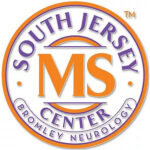
There are many common neurological diseases, but what do these illnesses have in common? We’ve compiled estimates of incidence, prevalence, and cost from studies of more than 1000 neurological disorders, including Alzheimer’s disease, epilepsy, and chronic low back pain. We also know how much of a financial burden neurologic disorders place on Americans. But what’s the true cost of these diseases? We need a more accurate estimate to allocate scarce resources and develop health care plans.
Many people don’t realize that they have a neurological disease, and many don’t get the proper treatment because they aren’t aware of their symptoms. This is why it’s essential to know the symptoms of common neurological diseases. It will make it easier to get the right diagnosis and receive effective treatment. For more information on neuromuscular disorders, click the link below. While the symptoms of these disorders are very similar, some neurological diseases are more severe than others.
Scientists have named the main causes of strokes
A stroke is a serious, potentially life-threatening medical condition that affects about six million people per year. Other common neurological diseases include encephalitis, epidural abscess, meningitis, and neuropathy. Neurological conditions also include psychiatric disorders such as psychosis, anxiety neurosis, and drug addiction. These conditions may also be the result of a bacterial or viral infection.
Despite its high prevalence, the underlying etiology of most neurological diseases remains unknown. Researchers have identified several genetic and environmental risk factors that contribute to an increased risk of developing the disease. In addition to genetic and environmental factors, increasing age has been shown to be a major risk factor. The global prevalence of neurological diseases increased by two to three times between 1990 and 2016, mainly due to the marked aging of the population. This increase is expected to continue for decades.
A stroke is a devastating, life-threatening condition. It happens when a blood vessel to the brain becomes blocked, either temporarily or permanently, so that the brain cannot receive oxygen. Oftentimes, this is fatal, as the brain is not able to function properly. Even if a stroke is not fatal, it can leave behind many lasting aftereffects. In fact, 50% of patients with stroke are disabled for life. And if a stroke occurs in the first place, it may be the only way to save a loved one’s life.
Epilepsy is a chronic, noncommunicable disease of the brain that affects approximately 50 million people worldwide. People with epilepsy are prone to unprovoked seizures. In addition, seizures caused by epilepsy are rarely related to alcohol withdrawal, drug exposure, or any other medical condition. Severe electrolyte imbalance, high blood sugar, or a combination of these factors can also cause seizures. If you have epilepsy, it’s important to visit a physician to determine what kind of treatment is necessary for you.
A new method for diagnosing neurological disorders
Parkinson’s disease is another example of a common neurological disease. Parkinson’s disease affects the coordination of movements and is common in older people. It impacts nearly one million people in the U.S., but fortunately, there are treatments available for this condition. If you think you have any of these symptoms, contact 911 right away. A visit to an emergency room will help rule out stroke and allow you to receive potentially life-saving treatments.
Molecular characterization of neurological diseases is crucial to accelerating treatments and improving clinical care. UF researchers have established a Center for NeuroGenetics in the Cancer Genetics Research Complex. Their researchers are taking genetic, clinical, and molecular approaches to study common neurological disorders. The results will improve the way we understand these diseases, and they will help us combat these devastating conditions. This is a very promising step towards creating more effective treatments for neurological disorders.
Whole genome sequencing is a powerful diagnostic tool for detecting common neurological disorders. In the past, it was believed that these disorders could not be detected through other tests, but it’s now possible to detect these diseases with high accuracy. The new technique was evaluated against a standard NHS test in cases where the patient’s genetic profile included a repeat expansion disorder. In other words, it was deemed reliable enough to be used as a diagnostic tool for most neurological disorders.
